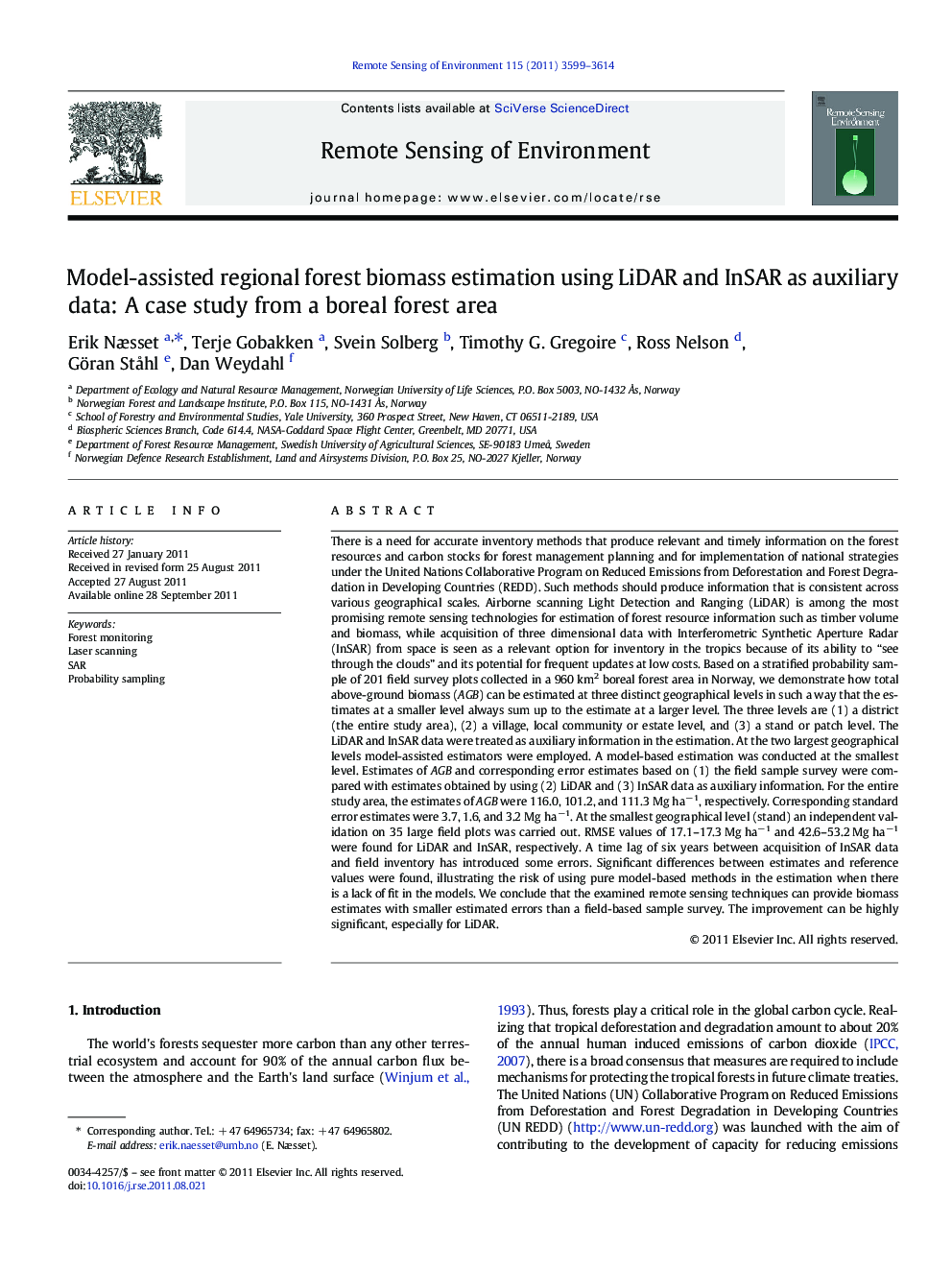| کد مقاله | کد نشریه | سال انتشار | مقاله انگلیسی | نسخه تمام متن |
|---|---|---|---|---|
| 4459503 | 1621285 | 2011 | 16 صفحه PDF | دانلود رایگان |

There is a need for accurate inventory methods that produce relevant and timely information on the forest resources and carbon stocks for forest management planning and for implementation of national strategies under the United Nations Collaborative Program on Reduced Emissions from Deforestation and Forest Degradation in Developing Countries (REDD). Such methods should produce information that is consistent across various geographical scales. Airborne scanning Light Detection and Ranging (LiDAR) is among the most promising remote sensing technologies for estimation of forest resource information such as timber volume and biomass, while acquisition of three dimensional data with Interferometric Synthetic Aperture Radar (InSAR) from space is seen as a relevant option for inventory in the tropics because of its ability to “see through the clouds” and its potential for frequent updates at low costs. Based on a stratified probability sample of 201 field survey plots collected in a 960 km2 boreal forest area in Norway, we demonstrate how total above-ground biomass (AGB) can be estimated at three distinct geographical levels in such a way that the estimates at a smaller level always sum up to the estimate at a larger level. The three levels are (1) a district (the entire study area), (2) a village, local community or estate level, and (3) a stand or patch level. The LiDAR and InSAR data were treated as auxiliary information in the estimation. At the two largest geographical levels model-assisted estimators were employed. A model-based estimation was conducted at the smallest level. Estimates of AGB and corresponding error estimates based on (1) the field sample survey were compared with estimates obtained by using (2) LiDAR and (3) InSAR data as auxiliary information. For the entire study area, the estimates of AGB were 116.0, 101.2, and 111.3 Mg ha−1, respectively. Corresponding standard error estimates were 3.7, 1.6, and 3.2 Mg ha−1. At the smallest geographical level (stand) an independent validation on 35 large field plots was carried out. RMSE values of 17.1–17.3 Mg ha−1 and 42.6–53.2 Mg ha−1 were found for LiDAR and InSAR, respectively. A time lag of six years between acquisition of InSAR data and field inventory has introduced some errors. Significant differences between estimates and reference values were found, illustrating the risk of using pure model-based methods in the estimation when there is a lack of fit in the models. We conclude that the examined remote sensing techniques can provide biomass estimates with smaller estimated errors than a field-based sample survey. The improvement can be highly significant, especially for LiDAR.
► Biomass estimators that are consistent across geographical levels are presented.
► They are useful for forest management inventories and local REDD monitoring.
► They are demonstrated with a field sample survey and LiDAR and InSAR data.
► Significant improvements in precision of biomass estimates are obtained with LiDAR.
► Moderate improvements are observed for InSAR data over the pure field survey.
Journal: Remote Sensing of Environment - Volume 115, Issue 12, 15 December 2011, Pages 3599–3614